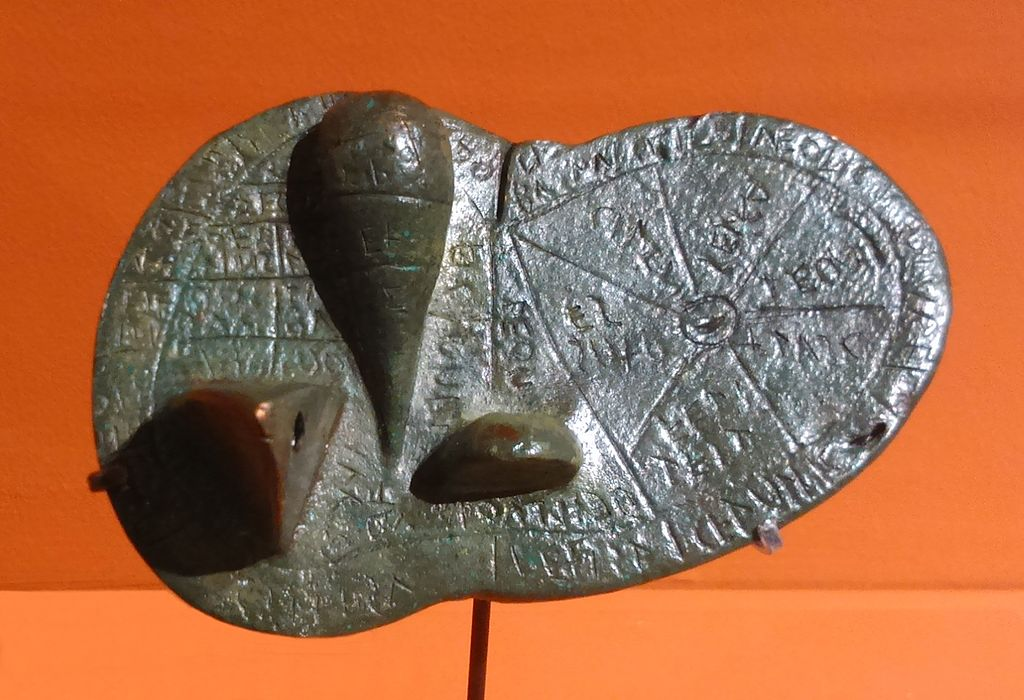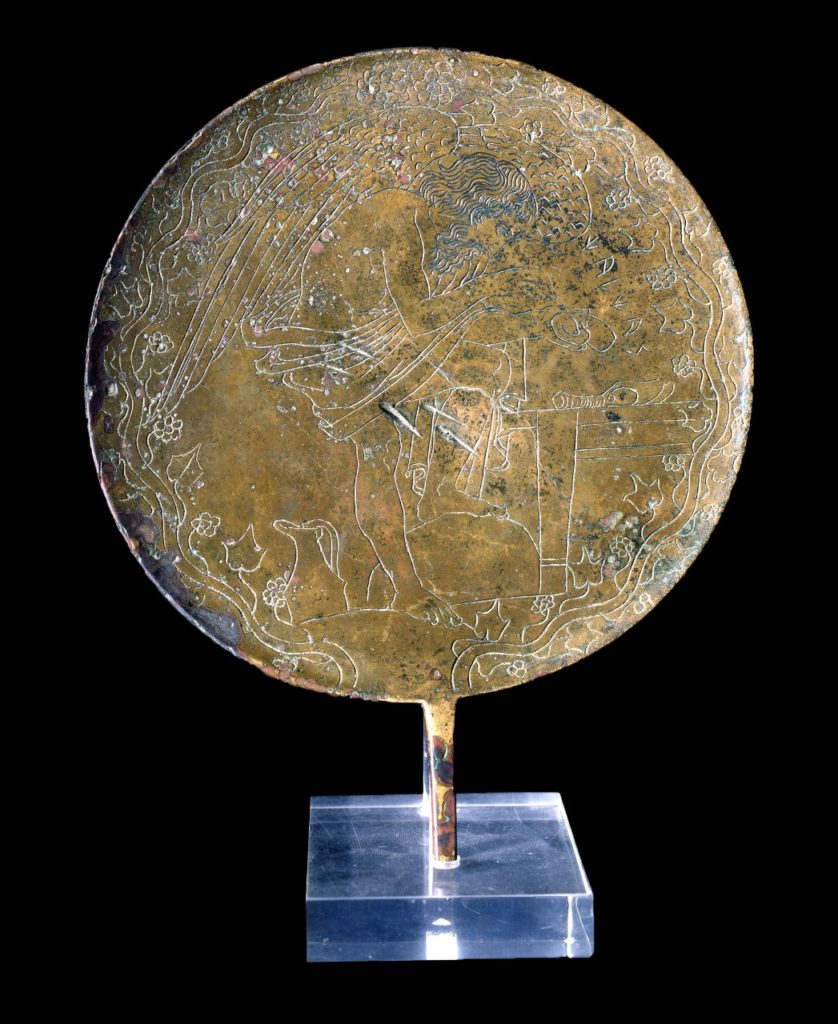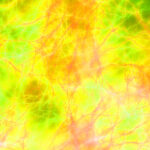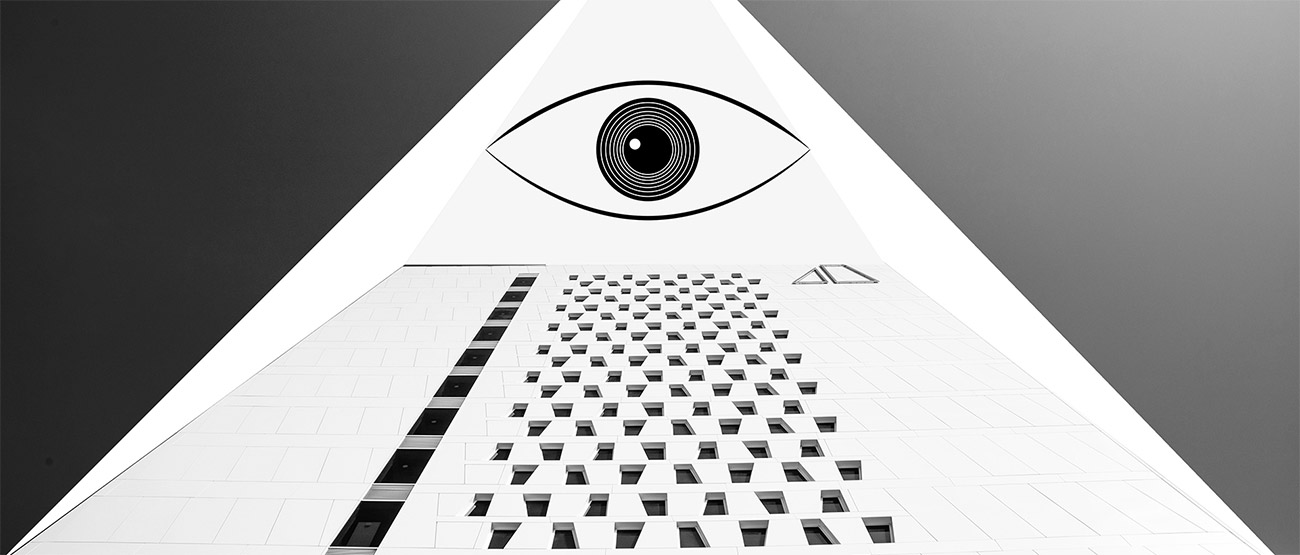Apam Napat is a deity in the Indo-Iranian pantheon associated with water. His names in the Vedas, Apām Napāt, and in Zoroastrianism, Apąm Napāt, mean “child of the waters” in Sanskrit and Avestan respectively. Napāt (“grandson”, “progeny”) is cognate with Latin nepos and English nephew.[a] In the Rig Veda, he is described as the creator of all things.
In the Vedas it is often apparent that Apām Napāt is being used as a title, not a proper name. This is most commonly applied to Agni, god of fire, and occasionally to Savitr, god of the sun.
- Savitṛ (also rendered as Savitur, in Vedic scriptures is an Aditya i.e. off-spring of the Vedic primeval mother goddess Aditi. His name in Vedic Sanskrit connotes “impeller, rouser, vivifier.” He is sometimes identified with—and at other times distinguished from—Surya, “the Sun god”. When considered distinct from the Sun proper, he is conceived of as the divine influence or vivifying power of the Sun. The Sun before sunrise is called Savitr, and after sunrise until sunset it is called Sūrya. Savitr is venerated in the Rig Veda, the oldest component of the Vedic scriptures. He is first recorded in book three of the Rigveda; (RV 3.62.10) later called the Gayatri mantra. Furthermore, he is described with great detail in Hymn 35 of the Rig Veda, also called the Hymn of Savitr. In this hymn, Savitr is personified and represented as a patron deity. He is celebrated in eleven whole hymns of the Rig Veda and in parts of many others texts, with his name being mentioned about 170 times in aggregate. Savitr disappeared as an independent deity from the Hindu pantheon after the end of the Vedic period, but is still worshiped in modern Hinduism and is referred to as Sāvitrī. Savitr has golden arms, and is broad-handed or beautiful-handed. He is also pleasant tongued or beautiful-tongued, and is once called iron-jawed. His eyes are golden as well. He is yellow-haired, an attribute shared with Agni and Indra. He dons on a tawny garb. He has a golden chariot with a golden axle, which is omni-form, just as he himself is capable of assuming all forms. His channel is analogized as a resplendent chariot drawn by two radiant steeds or by two or more bronze, white-footed stallions. Mighty splendour (“amati”) is preeminently attributed to Savitr, and mighty “golden” splendour to him only. Such splendour he stretches out or diffuses. He illumines the air, heaven and earth, the world, the spaces of the earth, the vault of heaven.
- In DC Comics‘ The Flash comics and The CW‘s The Flash TV series, the speedster Savitar is an enemy of the Flash who named himself after the Hindu god.[citation needed] In a fiction by author Ryan Sequeira, called “EvOLv”, where Savitr has been named as one of the Supreme Gods – parallel with Shiva – The God Savitr is referred to as the source of light in the multiverse.[citation needed] In the Dark-Hunter fantasy series by author Sherrilyn Kenyon, Savitar is a Chthonian god killer who is thousands of years old and was responsible for policing the Atlantean pantheon.[citation needed]
- Keshavadas, Sadguru Sant (19 January 2022). Gayatri: The Highest Meditation. Taylor & Francis. ISBN 978-1-000-44807-8.
- Essence of Inquiry: Vicharasangraham, A Commentary by Nome. Society of Abidance in Truth. 19 January 2019.
- Monier-Williams Sanskrit Dictionary (1899), p. 1190.
- “Rig Veda: Rig-Veda Book 1: HYMN XXXV. Savitar”.
- MacDonell, A.A. (1881). Vedic Mythology. Williams and Norgate.
They are known as ‘Fivers’ in Islam. The five first Imams or Teachers.
A correspondence has also been posited by Boyce between both the Vedic and Avestic traditions of Apam Napat, and Varuna, who is also addressed as “Child of the Waters”, and is considered a god of the sea. In the Iranian tradition, he is also called Burz (“high one,” Persian: برز) and is a yazad.
Role
In Yasht 19 of the Zoroastrian Avesta Apąm Napāt appears as the creator of mankind. However, since in Zoroastrianism Ahura Mazdā is venerated as supreme creator, this function of Apąm Napāt has become reduced. This is one reason Apąm Napāt is no longer widely worshipped, though he is still honoured daily through the Zoroastrian liturgies. The creator-god status is also seen in a hymn in honour of the Vedic Apām Napāt.
Alongside Mithra, Apąm Napāt maintains order in society, as well as Khvarenah, by which legitimate rule is maintained among the Iranian peoples. It is his duty to distribute water from the sea to all regions.
Fire and water
In one Vedic hymn Apām Napāt is described as emerging from the water, golden, and “clothed in lightning”, which has been conjectured to be a reference to fire. His regular identification with Agni, who is described a number of times as hiding or residing in water, and comparison with other Indo-European texts, has led some to speculate about the existence of a Proto-Indo-European myth featuring a fire deity born from water.
Other such texts include a ninth-century Norwegian poem that uses the name sǣvar niþr, meaning “grandson of the sea,” as a kenning for fire, and an old Armenian poem in which a reed in the middle of the sea spontaneously catches fire, from which springs the hero Vahagn, with fiery hair and eyes that blaze like sun.
Conjectured original fireless myth
Whether fire was an original part of Apam Napat’s nature remains a matter of debate, especially since this connection is absent from the Iranian version. Hermann Oldenberg believed Apam Napat was originally an independent water deity who later came to be associated with Agni, in part because of an ancient Indian belief that water contained fire within itself, fire appearing to “enter into” water when quenched by it.
Associations with Savitr could be understood as similarly deriving from an image of the setting sun sinking into the ocean. Another theory explains the connection between fire and water through lightning, “the flash of fire born from the rainbearing clouds”.
‘Swamp gas’ conjecture
Based on the idea that this fire-from-water image was inspired by flaming seepage natural gas, attempts have been made to connect the name “Apam Napat” to the word “naphtha“, which passed into Greek – and thence English – from an Iranian language.
However, there is only a modest amount of evidence for a link between the sacred fires of Iranian religion and petroleum or natural gas – although the account of the blowing of the 3 sacred fires out to sea from the back of the ox Srishok where, unquenched, they continue to burn on the water is suggestive – particularly in relation to hydrocarbon deposits in the Southwestern part of the Caspian Sea, exploited currently by the Absheron gas field near Baku in Azerbaijan.
The etymology of the word “naphtha” has been claimed likely to relate to the Akkadian napṭu, “petroleum”.
See also
Notes
- Georges Dumézil and others have suggested an alternative origin for the name, which ties it etymologically to other Indo-European deities such as Etruscan Nethuns, Celtic Nechtan and Roman Neptune (see etymology of Neptune).
References
- Philibert, Myriam (1997). Les Mythes préceltiques. Monaco: Éditions du Rocher. pp. 244–247.
- Dumézil, Georges (1995). Mythe et Epopée. Vol. III. Quarto Gallimard, pub. Éditions Gallimard. p. 40. ISBN 2-07-073656-3.
- “Son of Waters”. Rig Veda. Translated by Griffith, Ralph T.H. (1896 ed.). 2.35.2 – via sacred-texts.com.
- Boce, Mary (1989). A History of Zoroastrianism: The Early Period. BRILL. pp. 42–43, 45, 47–48. ISBN 90-04-08847-4.
- “Apąm Napāt”. Encyclopædia Iranica.
- “Yasht 8.34”. Sacred Books of the East. Translated by Darmesteter, James (American ed.). 1898.
- “Part 1 (SBE12) 1:2:3:1”. Satapatha Brahmana. Translated by Eggeling, Julius (1882 ed.) – via sacred-texts.com.
- Rig Veda 7.49.4
- Rig Veda 3.1
- West, M.L. (24 May 2007). Indo-European Poetry and Myth. Oxford University Press. pp. 270–272. ISBN 978-0-19-928075-9.
- Oldenberg, Hermann (1894). Die Religion des Veda [The Religion of the Veda] (in German). Berlin, DE: W. Hertz. pp. 100–119 – via Archive.org.
Oldenberg, Hermann (1988). The Religion of the Veda. Translated by Shrotri, Shridhar B. Motilal Banarsidass. pp. 51–68. ISBN 978-81-208-0392-3 – via Google Books. - Findly, Ellison Banks (1979). “The ‘Child of the Waters’: A Revaluation of Vedic Apāṃ Napāt”. Numen. 26 (2): 164–184. doi:10.2307/3269717. JSTOR 3269717.
- Tyrrell, Maliheh S. (2000). Aesopian Literary Dimensions of Azerbaijani Literature of the Soviet Period, 1920-1990. Lexington Books. p. 34.
- “Azerbaijan early history”. About.com. Retrieved 3 July 2014.
- “chapter 18 verses 8–9”. Bundahishn.
- R. J. Forbes (1966). Studies in Ancient Technology. Brill Archive. p. 13. GGKEY:YDBU5XT36QD.
- Af Edholm, Kristoffer (2017). “Royal splendour in the waters: Vedic Śri-̄́ and Avestan Xvarənah-“. Indo-Iranian Journal. 60 (1): 17–73. doi:10.1163/15728536-06001002. JSTOR 26546262. Retrieved 9 May 2021.
- Magoun, Herbert W. (1898). “Apāṁ Napāt in the Rig-Veda“. Journal of the American Oriental Society. 19: 137–144. doi:10.2307/592476. JSTOR 592476.
- “Apąm Napāt”. Encyclopædia Iranica.
- Forizs, Laszlo. “Apāṁ Napāt, Dīrghatamas, and construction of the brick altar. Analysis of RV 1.143”. (“Laszlo Forizs personal site”.)
| Hindu deities and texts |
|---|
Nethuns
In Etruscan mythology, Nethuns was the god of wells, later expanded to all water, including the sea. The name “Nethuns” is likely cognate with that of the Celtic god Nechtan and the Persian and Vedic gods sharing the name Apam Napat, perhaps all based on the Proto-Indo-European word *népōts “nephew, grandson.” In this case, Etruscan may have borrowed the Umbrian name *Nehtuns (Roman Neptune, who was originally a god of water).

Nethuns is mentioned on the Piacenza liver, a third-century BC bronze model of a sheep’s liver used for divinatory rites called haruspicy, as Neθ, an abbreviation for his full name.
- The Liver of Piacenza is an Etruscan artifact found in a field on September 26, 1877, near Gossolengo, in the province of Piacenza, Italy, now kept in the Municipal Museum of Piacenza, in the Palazzo Farnese. It is a life-sized bronze model of a sheep’s liver covered in Etruscan inscriptions (TLE 719), measuring 126 × 76 × 60 mm (5 × 3 × 2.4 inches) and dated to the late 2nd century BC, i.e. a time when the Piacenza region would already have been Latin-dominated (Piacenza was founded in 218 BC as a Roman garrison town in Cisalpine Gaul).
- The liver is subdivided into sections for the purposes of performing haruspicy (hepatoscopy); the sections are inscribed with names of individual Etruscan deities. The Piacenza liver is a striking conceptual parallel to clay models of sheep’s livers known from the Ancient Near East, reinforcing the evidence of a connection (be it by migration or merely by cultural contact) between the Etruscans and the Anatolian cultural sphere. A Babylonian clay model of a sheep’s liver dated to the Middle Bronze Age is preserved in the British Museum. The Piacenza liver parallels the Babylonian artifact by representing the major anatomical features of the liver (the gall bladder, caudate lobe and posterior vena cava) as sculpted protrusions.
- The outer rim of the Piacenza liver is divided into 16 sections; since according to the testimony of Pliny and Cicero,[citation needed] the Etruscans divided the heavens into 16 astrological houses, it has been suggested that the liver is supposed to represent a model of the cosmos, and its parts should be identified as constellations or astrological signs.[citation needed] Each of the 16 houses was the “dwelling place” of an individual deity. Seers would e.g. draw conclusions from the direction in which lightning was seen. Lightning in the east was auspicious, lightning in the west inauspicious (Pliny 2.143f.). Stevens (2009) surmises that Tin, the main god of lightning, had his dwelling due north, as lightning in the north-east was most lucky, lightning in the north-west most unlucky, while lightning in the southern half of the compass was not as strong an omen (Servius ad. Aen. 2.693). The deciphering of the complex content of the Liver of Piacenza was the subject of two scientific monographs by the University of Bologna researcher Antonio Gottarelli, published between 2017 and 2018. These books represent the most complete analysis of its content and they reveal its nature of a handheld instrument for the digital calculation of a liturgical-ritual calendar. Its dating would be at fourth century BC and the position of place of discovery at 45° of latitude would be consistent with its instrumental use.[citation needed] The theonyms are abbreviated and in many cases, the reading even of the abbreviation is disputed. As a result, there is a consensus for the interpretation of individual names only in a small number of cases. The reading given below is that of Morandi (1991) unless otherwise indicated:
- circumference:
- interior:
- tur[an] (Venus)
- leθn (as no. 11)
- la/sl (Lares?)
- tins/θvf[vlθas] (as no. 2)
- θufl/θas
- tins/neθ (as no. 3?)
- caθa (as no. 8)
- fuf/lus (as no. 9)
- θvnθ(?)
- marisl/latr
- leta (Leda)
- neθ (as no. 7)
- herc[le] (Hercules)
- mar[is] (Mars?)
- selva (as no. 10)
- leθa[m] (probably an underworld deity. Seen also in the Tabula Capuana, lines 3, 6-7, 8, and 12. Perhaps same as leθn(s) in #s 11 and 18.)
- tlusc (as no. 12)
- lvsl/velch
- satr/es (Saturnus)
- cilen (as no. 16)
- leθam(as n. 32)
- meθlvmθ
- mar[is] (as no. 30)
- tlusc (as no. 12)
Two words are on the bottom side of the artefact:
- tivs (or tivr “Moon” or “Month”?)
- usils (“of the sun” or “of the day”
- The Liver Tablet, ME 92668
- beginning in the “north” (the left side in the image shown above) and going clockwise, c.f. Nancy Thomson De Grummond, Etruscan Myth, Sacred History and Legend (2006), p. 50.
- Nancy T. de Grummond, Moon Over Pyrgi: Catha, an Etruscan Lunar Goddess?, American Journal of Archaeology 112.3 (July 2008).
- C. Thulin (1906) Die Götter des martianus capella und die Bronzeleber fon Piacenza, Giessen, Töpelmann.
- L.B. Van der Meer (1987) The bronze liver of Piacenza: Analysis of a Polytheistic Structure, Amsterdam: J.C. Gieben.
- Alessandro Morandi (1991) Nuovi lineamenti di lingua etrusca, Massari.
- Natalie L. C. Stevens (April 2009) A New Reconstruction of the Etruscan Heaven American Journal of Archaeology 113.22, 153-164.
- Antonio Gottarelli (2017) Cosmogonica. Il fegato di Tiāmat e la soglia misterica del Tempo. Dai miti cosmologici del Vicino Oriente antico ad una nuova interpretazione del fegato etrusco di Piacenza, collana di “Archeologia del Rito”, n.2, Te.m.p.l.a., Bologna.
- Antonio Gottarelli (2018) Padānu. Un’ombra tra le mani del tempo. La decifrazione funzionale del fegato etrusco di Piacenza, collana di “Archeologia del Rito”, n.3, Te.m.p.l.a., Bologna.
- Etruscan religion
As a patron god his profile, wearing a ketos (sea monster) headdress, appears on a coin of Vetulonia, circa 215 – 211 BC; he is accompanied by his trident between two dolphins.

- Vetulonia, formerly called Vetulonium (Etruscan: Vatluna), was an ancient town of Etruria, Italy, the site of which is probably occupied by the modern village of Vetulonia, which up to 1887 bore the name of Colonnata and Colonna di Buriano: the site is currently a frazione of the comune of Castiglione della Pescaia, with some 400 inhabitants. It lies 300m above sea level, about ten miles directly northwest of Grosseto, on the northeast side of the hills which project from the flat Maremma and form the promontory of Castiglione.
- Vetulonia has Etruscan origins. It was, by 600 BC, part of the Etruscan League of twelve cities. Dionysius of Halicarnassus places the city within the Latin alliance against Rome in the seventh century BC. According to Silius Italicus (Punica VIII.485ff), the Romans adopted their magisterial insignia, the Lictors‘ rods and fasces and the curule seat, from Vetulonia; in 1898, a tomb in the necropolis was discovered with a bundle of iron rods with a double-headed axe in the centre, and soon afterwards, a grave stela inscribed for Avele Feluske was discovered, on which the fasces were pictured. Pliny the Elder and Ptolemy also mention the town. The rich votive furnishing from the two extensive necropoleis attest to the importance of Vetulonia’s elite.
- The Mura dell’Arce (cyclopean walls) date probably from the 6th-5th century BC, and aerial photography has revealed further stretches, which show the political and commercial importance of Vetulonia, which was famous for its goldsmiths. Under the Roman Empire, however, it shrank to a secondary center, with the northward spread of malaria. Little is known also about medieval Vetulonia: first fought over by the abbots of San Bartolomeo di Sestinga and the Lambardi family of Buriano, it was acquired by the commune of Massa Marittima in 1323. Nine years later it was handed over to Siena. The site of the ancient city was not identified before 1881. The Etruscan city situated on the hill of Colonna di Buriano, where there are remains of city walls of massive limestone, in almost horizontal courses, was accompanied by two necropoleis partly excavated by Isidoro Falchi in 1885-86; the town was renamed Vetulonia by royal decree in 1887. The objects discovered in its extensive seventh-century necropolis, where over 1,000 tombs have been excavated, are now in the museums of Grosseto and Florence. The most important tombs, in this “richest and most interesting tomb group of northern Etruria”, were covered by tumuli, which still form a prominent feature in the landscape. The site halfway up the hill to the modern town is easily walked in about ten minutes and is open June to September from 10 a.m. to 7 p.m. Tuesday to Sunday, and seven days a week in July and August. There is no car park but there is a lay-by a few yards away. An archaeological museum, the Museo Isidoro Falchi, was opened in 2000.
- Mystery of the Etruscans
- Dionysius, iii.52.
- One or more of the preceding sentences incorporates text from a publication now in the public domain: Ashby, Thomas (1911). “Vetulonium“. In Chisholm, Hugh (ed.). Encyclopædia Britannica. Vol. 28 (11th ed.). Cambridge University Press. p. 15.
- Falchi, in Notizie degli scavi December 1887.
- Larissa Bonfante Warren, reviewing Giovannangelo Camporeale, La Tomba del Duce, Vetulonia vol. I (Istituto di studi etruschi ed italici) Florence: Olschki 1967, in American Journal of Archaeology 73.4 October 1969:484.
- Notice on gate
- Museo Isidoro Falchi
- Bell, Sinclair and Alexandra A. Carpino, eds. 2016. A Companion to the Etruscans. Blackwell Companions to the Ancient World. Chichester: John Wiley & Sons.
- Haynes, Sybille. 2000. Etruscan civilization: A cultural history. Los Angeles: J. Paul Getty Museum.
- Pallottino, Massimo. 1978. The Etruscans. Bloomington: Indiana University Press.
- Sprenger, Maia, and Gilda Bartoloni. 1983. The Etruscans: Their history, art and architecture. Translated by Robert E. Wolf. New York: Harry N. Abrams.
- Turfa, Jean MacIntosh, ed. 2013. The Etruscan World. Routledge Worlds. Abingdon, UK: Routledge.
- MysteriousEtruscans.com: Vetluna (Roman Vetulonia)
- LacusCurtius website: Vetulonia
- (Assiciazione pro Loc di Vetulonia)Vetulonia on-line
- Dr. Maria Grazia Celuzza, “Vetulonia” (in Italian)
- Harris, W., R. Talbert, T. Elliott, S. Gillies (30 September 2020). “Places: 403291 (Vatl/Vetulonia)”. Pleiades. Retrieved March 7, 2012.
NETHUNS is engraved on a bronze Etruscan mirror in the Museo Gregoriano in the Vatican.
- Mirror with engraving of Calchas?
- A particularly representative class of Etruscan craft is that formed by bronze mirrors, decorated with engravings or, more rarely, in relief on the surface opposite to the reflecting part. Chronologically they are distributed between the sixth and third century B.C., with a particular development in the 4th cent. BC. This famous mirror shows an elderly haruspex intent on examining the liver of a sacrificed animal for drawing auspices from it. The Etruscan inscription describes him as Kalkhas, that is the mythical Greek soothsayer Calchas represented here in the Etruscan iconographic version with the attribute of wings, a clear characteristic that underlines his function of go-between between earthly and transcendent reality. The foot placed on a rock is to be noted. This is a fundamental action in the divining process by the haruspex who in doing this establishes contact with the earth as the site of the natural sphere and of the underworld.

Late fifth century B.C.
Cast bronze, height 18.5 cm; diam. 14.8 cm
Cat. 12240
- The transliteration “Nathuns” was used in the early twentieth century.
- Helmut Rix, “Etruscan,” in The Ancient Languages of Europe (Cambridge University Press, 2008), p. 163.
- L.B. van der Meer, The Bronze Liver of Piacenza: Analysis of a Polytheistic Structure (1987).
- One of the Etruscan dodecapolis, in northern Etruria.
- An illustrated example.
- Noted by George Dennis, The Cities and Cemeteries of Etruria (London) 1848, a time when Nethuns and Neptune were not yet securely linked. (On-line text)
- Lexicon Iconographicum Mythologiae Classicum, VII (Zurich and Munich:Artemis) 1994. The basic professional reference.






